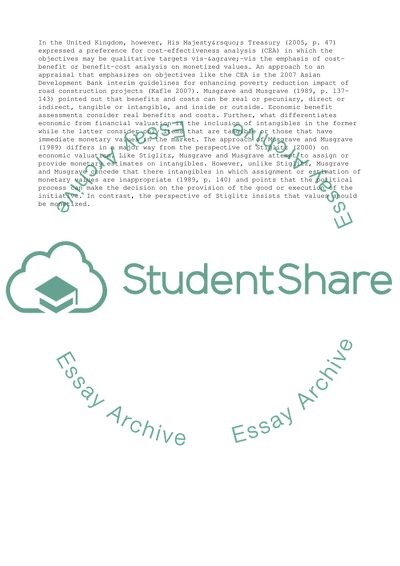Cite this document
(Financial and Economic Basic Approaches in Benefit Estimation by Literature review - 1, n.d.)
Financial and Economic Basic Approaches in Benefit Estimation by Literature review - 1. Retrieved from https://studentshare.org/business/1751337-critical-review-of-benefit-estimation-and-sensitivity-and-risk-analysis-in-relation-to-road-projects
Financial and Economic Basic Approaches in Benefit Estimation by Literature review - 1. Retrieved from https://studentshare.org/business/1751337-critical-review-of-benefit-estimation-and-sensitivity-and-risk-analysis-in-relation-to-road-projects
(Financial and Economic Basic Approaches in Benefit Estimation by Literature Review - 1)
Financial and Economic Basic Approaches in Benefit Estimation by Literature Review - 1. https://studentshare.org/business/1751337-critical-review-of-benefit-estimation-and-sensitivity-and-risk-analysis-in-relation-to-road-projects.
Financial and Economic Basic Approaches in Benefit Estimation by Literature Review - 1. https://studentshare.org/business/1751337-critical-review-of-benefit-estimation-and-sensitivity-and-risk-analysis-in-relation-to-road-projects.
“Financial and Economic Basic Approaches in Benefit Estimation by Literature Review - 1”, n.d. https://studentshare.org/business/1751337-critical-review-of-benefit-estimation-and-sensitivity-and-risk-analysis-in-relation-to-road-projects.


